
Sandstone"s durability makes it ideal for various construction projects. "
Sandstone is commonly used as a building material for facades, walls, and flooring. Its durability, strength, and aesthetic appeal make it suitable for both interior and exterior applications. Sandstone can be used in landscaping projects for pathways, patios, garden walls, and decorative features. Its natural appearance and variety of colors and textures can enhance outdoor spaces. Sandstone slabs are often used for paving driveways, walkways, and courtyards. Its strength and resistance to heavy loads make it suitable for areas with high foot traffic or vehicle use. Sandstone's thermal properties make it suitable for fireplace surrounds and hearths. Its ability to retain heat and withstand high temperatures is advantageous in these applications. Sandstone's workability and aesthetic appeal make it a popular choice for sculptors and artists. Its ability to be carved into intricate designs and its natural color variations add to its artistic value.
It can be used in paving outdoor spaces and facades and interior and exterior walls of buildings. Unsuitable Areas for Using Sandstone: Due to water absorption and high porosity and lack of resistance of sandstone in acidic environments, this stone is not suitable for use as a stepping stone, floor stone for the present and reception of buildings and toilets. When installing sandstone, the stone scoop is used because sandstone does not adhere well to mortar and grout. Rock is used in all everyday life suck example for uses of some rock are :
- Dolomite: it used as building stone and used in Glasses industry.
- Sand :used in glasses industry , building raw materials , concretion , cement ,fiber glasses , coating , polar system.
- Feldspar: used in ceramic industry. Sandstones do not generally polish
only those classified as true quartzites are sufficiently dense to take a polish and even then the granular crystalline structure often does not lend itself to polishing. The more natural, unpolished finish of sandstone remains visually unaffected by metal heels and other sharp impacts that can leave scratches and star marking on a polished surface. In regions with frequent freeze-thaw cycles, sandstone may not be suitable for exterior applications such as paving or outdoor structures. Water can penetrate the pores of the stone, freeze, and cause cracking or spalling. Sandstone may not be suitable for heavy industrial applications that involve extreme loads, high impact, or abrasive conditions. It may not possess the necessary strength and hardness to withstand such environments.
While sandstone can be used for countertops, it is not as durable or resistant to scratching and staining as some other natural stones like granite or quartzite. It may require regular sealing and maintenance to protect against damage. Sandstone is porous, which means it can absorb moisture. In areas with high moisture content or constant exposure to water, such as showers or swimming pools, sandstone may not be suitable as it can be prone to water damage and staining. Sandstone is sensitive to acidic substances. It can react with certain chemicals and acids, leading to discoloration and deterioration. Therefore, it is not recommended for environments where it may come into contact with strong acids or chemicals.
-

Sandstone is a versatile building material known for its durability, aesthetic appeal, and strength, making it suitable for various applications. It is commonly used in facades, walls, flooring, landscaping projects, and outdoor spaces such as pathways and patios. Its thermal properties also make it ideal for fireplace surrounds. However, sandstone has limitations due to its high porosity and water absorption. It is unsuitable for areas exposed to moisture or acidic environments, such as bathrooms or industrial settings. Additionally, sandstone may not withstand heavy loads or extreme weather conditions like freeze-thaw cycles. While it can be used for countertops, it requires regular maintenance to prevent damage from scratching and staining. Overall, understanding the appropriate uses of sandstone is crucial for maximizing its benefits while avoiding potential issues.
-
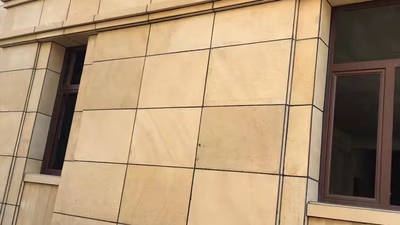
Sandstone is a versatile natural stone known for its aesthetic appeal and durability. Its unique patterns and warm tones make it suitable for various applications, including countertops, flooring, wall cladding, and outdoor spaces. The material"s excellent thermal insulation properties allow it to remain cool in warm climates, making it ideal for patios and pool areas. Sandstone is widely available across the globe, particularly in regions of Asia, which contributes to its affordability compared to other stone types. As a sustainable resource, sandstone is quarried with minimal processing, promoting environmentally friendly construction practices. Its resistance to weathering and heavy loads makes it suitable for high-traffic areas. Additionally, sandstone requires low maintenance; regular cleaning with mild soap suffices to maintain its appearance. Sealing can enhance its longevity and stain resistance.
The diverse color range of sandstone—from white to red—adds to its appeal in both construction and decorative applications. "
-
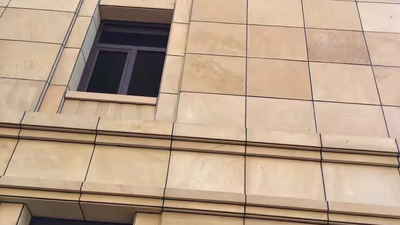
Sandstone forms in diverse environments such as deserts, riverbeds, and marine settings, influenced by sediment sources and weathering processes. Its mineral composition includes quartz, feldspar, and clay minerals, which determine its characteristics. Various types of sandstone exist: Quartz Sandstone is durable and light-colored; Arkose contains feldspar and has a reddish hue; Greywacke is dark and mixed with rock fragments; Cross-bedded sandstone features inclined layers from sand dune migration; Tuffaceous sandstone includes volcanic ash. Other types include Calcareous Sandstone, which crumbles in acidic conditions; Siliceous Sandstone, stable in acid; Iron Oxide Sandstone with brown to red colors; and Dolomite Sandstone, which is less resistant in urban areas. Weathering and erosion significantly affect sandstone"s composition over geological time scales. Environmental changes can lead to the formation of different sandstone types at various periods. Red sandstone is known for its reddish hue due to iron oxide, while white sandstone is light-colored and often used in construction. Brown sandstone has a warm appearance enriched with iron oxides.
Diagenesis involves physical and chemical changes during sediment transformation into rock, influenced by factors like temperature and pressure. Tectonic forces also contribute to the diversity of sandstone types by altering sedimentary environments. "
-
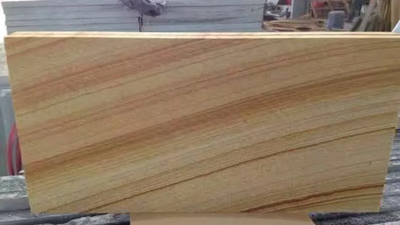
Sandstone is a sedimentary rock primarily made of sand-sized mineral particles, predominantly quartz. It forms through the compaction and cementation of sand grains over time. Sandstone is widely utilized in construction due to its durability and aesthetic appeal, serving as a building material for walls, floors, and facades. Its color varies significantly based on mineral content, ranging from white and beige to red and brown. Notable sandstone formations include the Grand Canyon and Petra"s temples. The rock"s texture can be fine- to coarse-grained, with distinct layers reflecting sediment deposition. The cementing material, which can include silica or calcium carbonate, influences the rock"s strength and appearance. Sandstone"s weather-resistant properties make it suitable for outdoor applications, while its ease of shaping allows for diverse architectural uses.
Additionally, its hardness makes it effective for sharpening tools. Overall, sandstone"s versatility in construction and historical significance as a material highlight its importance in various industries. "
-
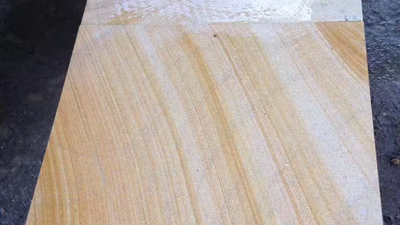
Sandstone formation in West Asia is influenced by various depositional environments, particularly deserts and ancient river systems. The process begins with the accumulation of loose sand grains, which undergo compaction and lithification to become solid rock. Cementation, involving minerals like silica and calcium carbonate, plays a crucial role in binding the grains together. Notable sandstone formations can be found in locations such as Petra, Wadi Rum, and the Al Hajar Mountains. These areas showcase stunning geological features that attract tourists and filmmakers alike. Sandstone"s permeability makes it valuable for water retention and filtration, contributing to its significance as a watershed. The composition of sandstone varies based on its distance from the source rock, with geological processes like erosion and tectonic activity further shaping these formations over time. Understanding these dynamics is essential for businesses engaged in commodity trade and supply chain solutions within the region. "
-
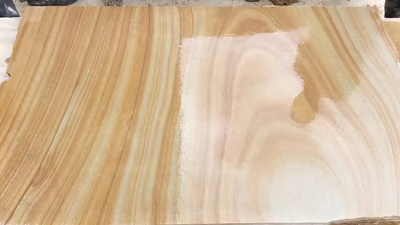
Sandstone is a sedimentary rock primarily composed of sand-sized grains, predominantly quartz, which provides its hardness and durability. The texture of sandstone varies from fine to coarse-grained, influenced by sorting and compaction. Its color spectrum ranges from tan to red, determined by mineral content and impurities like iron oxide. Sandstone is susceptible to both mechanical and chemical weathering, leading to unique landforms over time. Its workability makes it a favored material for construction and decorative applications, including walls, ceilings, and flooring. Sandstone"s thermal conductivity allows it to retain heat effectively, making it suitable for fireplaces and thermal storage systems. With a low water absorption rate of 1. 5 to 6%, sandstone is often used in outdoor settings such as patios and pool areas.
It can be categorized into four types based on its composition: clay sandstone, calcareous sandstone, siliceous sandstone, and quartzite. Notable structures made from sandstone include the White House and the Taj Mahal. The rock"s porosity varies significantly; high-porosity sandstones can be permeable, facilitating fluid movement essential for groundwater flow and oil reservoirs. Overall, the strength and durability of sandstone depend on its grain size, cementation level, and mineral makeup.






